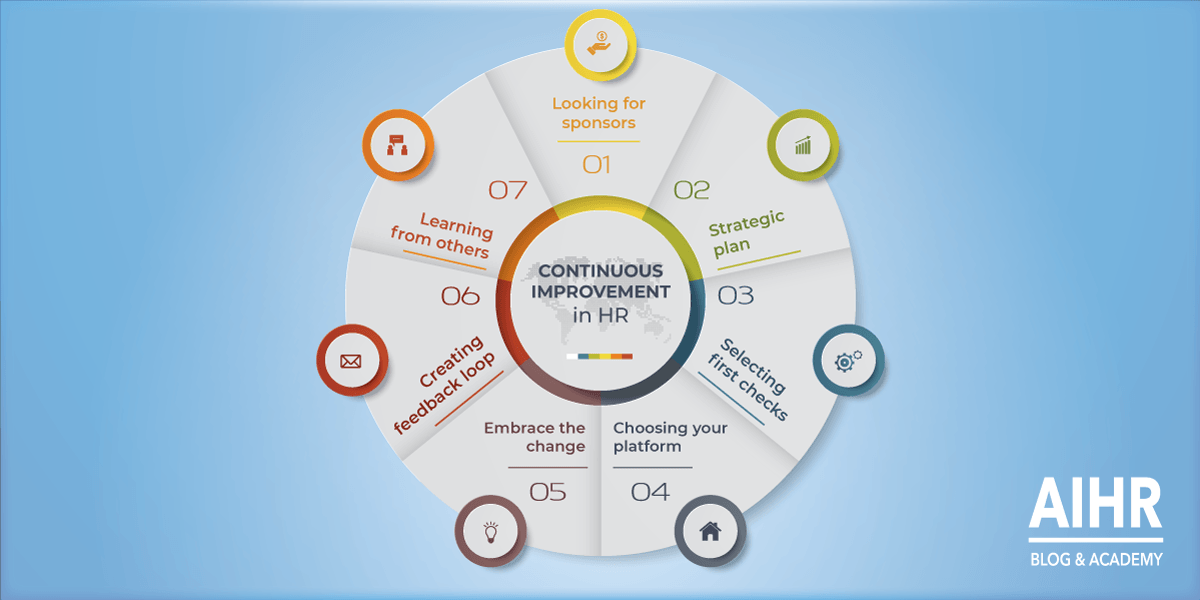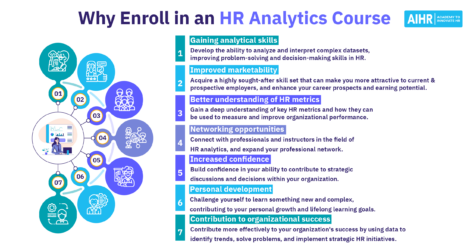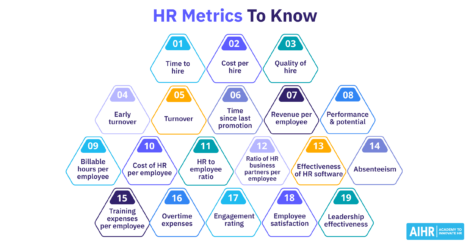A beginner’s guide to Continuous Improvement in HR

On Monday, 543 possible errors were found. Tuesday: an additional 79. Wednesday: 378 more. Just three average days. Imagine what would happen if these possible errors would not be handled on a daily basis.
No matter what your organization looks like, what systems you use or how talented your administrative team is: there are always going to be faults in your (HR) data. The question is: how many and how adequately are they being fixed? In my previous article I’ve explained how the concept of Continuous Improvement can reduce faults in your administration in a structured and highly automated way. Though concepts are great, the proof of the pudding is in the eating. In this joint article Rob van den Wijngaard (who – together with his team at Leiden University – is one of the front runners in Continuous Improvement) and I will show you where to start and what to do.
A quick recap: what is Continuous Improvement?
What we call Continuous Improvement is the process of continuously analyzing your administration for errors and risks, following up on issues and implementing structural changes to prevent them in the future.

Figure 1: The components of Continuous Improvement
Let’s explain using an example. Suppose you administrate overhead data in your HR system. In step 2 algorithms continuously scan your administration, looking for incorrect overhead types. For example by matching function with overhead type.
Every ‘exception’ (this is what we call a record that gets flagged for potentially being incorrect) is being examined by the administrative team. If it is an error, the record is altered (step 3). If the amount of errors gets too high, structural improvements (step 4) are implemented (based on the data found in the first three steps). For example, the administrative team receives clearer instructions on how to register overhead data.
1. Looking for sponsors: the business case
As with everything, Continuous Improvement is going to take up resources in your organization.
Resources tend to be scarce, so first thing on your list is finding a ‘sponsor’. Who in your organization is going to allow you to use the resources you need? Go find that person and convince them of the business case. But wait, before you whip out PowerPoint: by ‘business case’ we don’t mean creating 40 plus slides containing graphs, forecasts and SWOT-analyses. Instead, create an export, show the number of errors in it and explain the effects these errors will have on the business.
2. We’ve got a strategic plan, it’s called: doing things!
One of the big advantages of Continuous Improvement is its ability to scale to huge proportions.
At Leiden University they have around 40 controls continuously scanning the administration. In an average week 1.600 exceptions are found and taken care of by the administrative team. Note that these numbers could have been a lot higher, but given their experience with Continuous Improvement their administration is in really good shape.
The pitfall of this scalability is wanting to start too big. ‘We want to start monitoring everything!’ If you start with too ambitious plans, there is a risk you will not get the resources you need, you will blow up your administrative team or you will merely get tangled up in making sense of your plans. Start small, learn from your mistakes and celebrate successes. ‘The more we discover, the more there is to discover’.
3. Selecting your first checks
Generally you would want to start with a maximum of three controls.
Why not more? Because a big part of Continuous Improvement is about getting your administrative team up to speed. Every exception that your analysis finds, means nothing if it isn’t handled properly. It makes no sense to find more exceptions than can be handled. So, to start with, go for a maximum of three.
So which ones should you pick? The good thing is, you don’t have to answer this question by yourself. Get out of your seat and talk to your colleagues. Talk to controllers and administrators. Ask them which analyses take up a lot of time, which types of records are error-prone, and where they see the biggest risks.
A tip is to create a shortlist where you score each potential control on 3 things: efficiency gains, risk mitigation and possibility to automate. The ones that score the highest on these aspects make good candidates.
Table 1: Our top 5 themes for Continuous Improvement in HR
4. Choosing your platform
What platform to use depends on your ambitions and your budget. If the circumstances limit you to the most basic option, you could develop an Excel model that allows you to quickly analyze a dataset. Errors that you discover can be sent by email to the administrative team.
The biggest downside of this option is obviously the inability to handle large datasets. Honestly, Excel will only last during your first steps in exploring Continuous Improvement. If you decide to follow through on Continuous Improvement, we highly recommend building your controls in Python.
Python is a very powerful programming language, which handles large datasets extremely well and comes with an extensive list of very useful libraries. Though Python will make your controls quicker, more advanced and less error prone, the next step would be to use a platform that also offers a digital workflow. This is going to help your administrative team tremendously, because it will standardize the follow up. Which brings us to the next point.
5. Getting the administrative team to embrace the change
Though choosing the right platform is important, the importance of change management should not be underestimated. Finding exceptions is great, but if the exception is not handled properly and swiftly, you’re merely working on Continuous Monitoring, not on Continuous Improvement.
It is important to realize that Continuous Improvement can easily generate large numbers of exceptions on a daily basis. Depending on your controls, not every exception is going to be an error.
For most controls, an exception is a possible error. That means your administrative team not only has to fix errors. First they have to assess whether or not an exception is an actual error. If it isn’t, they have to log why it isn’t. Paradoxically, the more sophisticated your controls are, the less likely the exception is an actual error. Long story short, Continuous Improvement is going to ask a lot from your administrative team. Help them in coping with these changes. Make their lives as easy as you can.
6. Creating a feedback loop
At Leiden University, through the use of the digital workflow, the handling of the exceptions is logged extensively. When was the exception found, who handled it, what actions were taken? Everything is logged.
This has two major advantages: it offers a clear audit trail, and it allows for a feedback loop. Every time the administrative team handles an exception that is not an actual error, they log this. This feedback is then used to adjust the control if necessary. Controls that result in too many ‘false’ exceptions, cause an unnecessary burden for your administrative team.
7. Learning from others
The final and most important tip is to learn from others. Continuous Improvement is a new and exciting field in HR. Feel free to reach out and connect, and let’s share experiences!
Weekly update
Stay up-to-date with the latest news, trends, and resources in HR
Learn more
Related articles
Are you ready for the future of HR?
Learn modern and relevant HR skills, online












